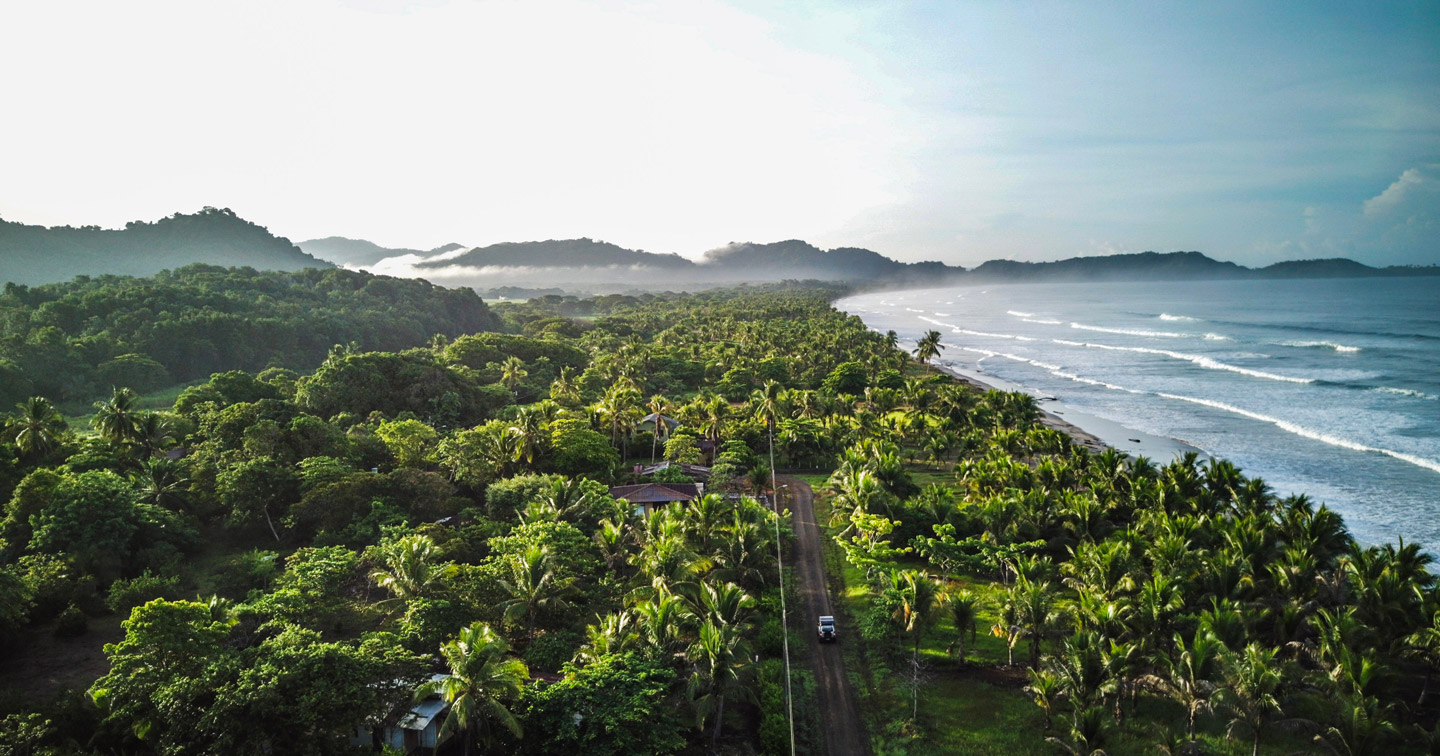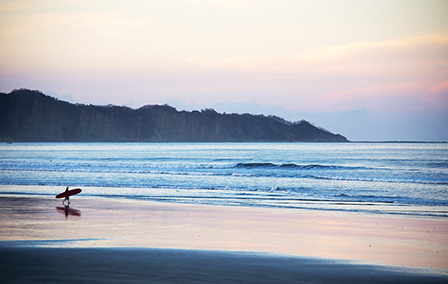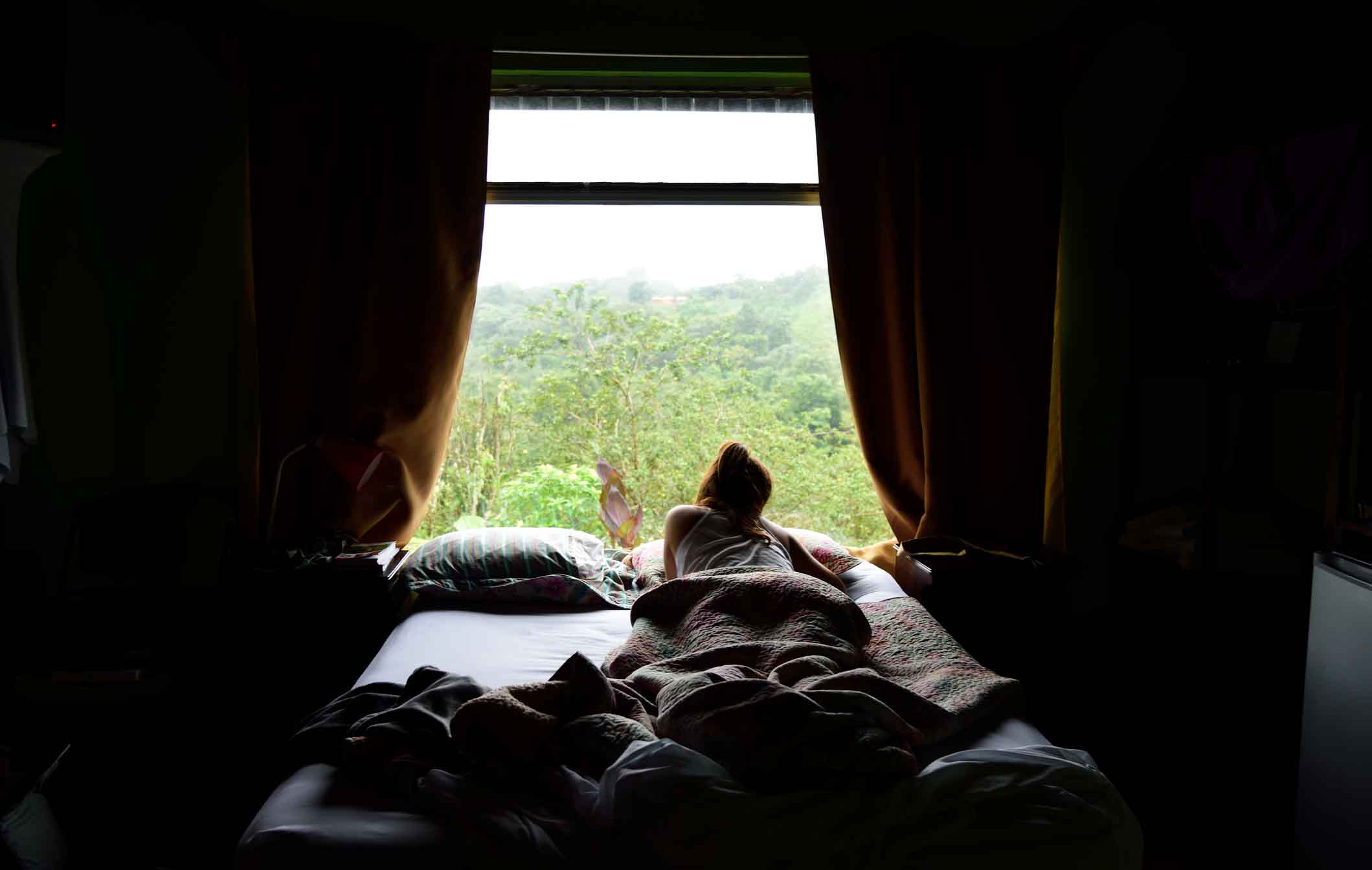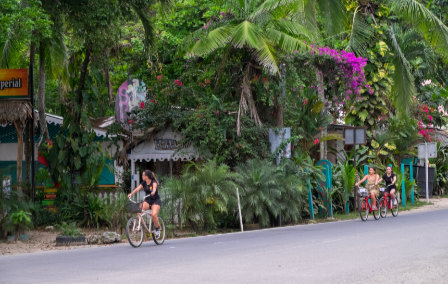Published 15th Apr. 2023
Reading time
If you’re stork raven mad about birds, you’ve come to the right place. Costa Rica is home to some truly im-peck-able birdwatching sites and unusual species that will make your heart soar. Now, we’re sure you don’t have time to learn about all 903 of Costa Rica’s bird species (never mind listen to more terrible puns) but this roundup of some of our favourites should give you an idea of the wonderment that awaits in Costa Rica’s canopies, mangroves and gardens. From tiny hummingbirds to massive macaws, here’s what to look out for when birding in Costa Rica.
Bird lover or not, a glimpse of this dazzling rainbow bird is one of the most sought-after sights for any visitor to Costa Rica. These small but stunning creatures have an iridescent emerald body, a red belly and black inner wings, and are part of the trogon family. The resplendent quetzal is the national bird of Guatemala, but unfortunately the ongoing disappearance of their tropical homes is threatening the survival of the species in Guatemala and elsewhere in Central America. Thankfully, it’s not all doom and gloom: Costa Rica’s Monteverde Cloud Forest is a protected area that preserves the natural habitat of these beautiful birds, a near-unique environment that allows unusual plants and animals to thrive. This makes it one of the best places in the world to spot resplendent quetzals along with plenty of other bird species (425 to be exact). Visit during mating season between February and July for the best chances of spotting resplendent quetzals in all their glory.
This shy bird enjoys small woodland streams, pools, mangroves and long walks along the beach (maybe scratch that last part). Measuring around five inches, American pygmy kingfishers are one of the smallest kingfisher species, and you can recognise them by their typical kingfisher shape, along with a dark green head, rusty underbelly and long black bill. Approach these birds slowly and quietly for the best chance of getting close to them, but bear in mind that they’re an elusive species, and have a habit of taking flight before you can say ‘pass me the camera.’ Carara National Park near the Pacific Coast is a great place to spot these charming creatures. While you’re there, keep your eyes (and ears) peeled for another of the park’s fabulous birds: the fiery scarlet macaw.
Speaking of macaws, here’s another unmistakable big bird to look out for when birding in Costa Rica. Great green macaws, also known as Buffon’s macaws, are the largest parrots in their natural range, averaging between 33.5 and 35.5 inches in length. This species has made a remarkable comeback after being driven to near extinction when their habitat and sole source of food was all but wiped out from deforestation; rumour has it they taught themselves to survive off a different, more abundant source of food. Even so, great green macaws remain a critically endangered species – around 95% of Costa Rica’s macaw habitat has disappeared over the last 100 years. Your chances of spotting them are best in Tortuguero, along with areas of the Sarapiquí zone such as Selva Verde, where the birds like to forage.
Don’t let the name fool you – there’s no need to head to colder climes to see this little hummingbird. Snowcaps get their name from the shining white patch on the male’s head (or ‘cap’), which is so dazzling that you may well spot it flitting between the trees, even though the birds themselves are only two-and-a-half inches long. Along with a white head, male snowcaps have a fluffy (and extremely cute) bronze, purple and black body. Hummingbirds aren’t difficult to find in Costa Rica – in Monteverde Cloud Forest, for example, the hummingbird gallery is frequented by many different species – but snowcaps are a little bit special. These dainty birds breed mostly at elevations between 980 and 2600ft, and live in the Costa Rican birding paradise of the Caribbean foothills. Rancho Naturalista and El Copal are two birding lodges where snowcaps are almost guaranteed to make an appearance. El Tapir is another great option, an unsigned hummingbird garden located around one mile past Quebrada Gonzalez if you’re coming from San Jose. You’ll need to pay the caretaker 2,500 colones or $5, but you’ll have a good chance of spotting these adorable birds once inside.
These large black birds are unlike any other (think funky-looking crows with an Elvis ‘do). And we’re not going to lie to you, they’re spectacularly elusive. Despite not being shy or difficult to recognise, umbrella birds are few and far between, partly because they’re now an endangered species. Umbrellabirds live exclusively in forests, specifically tropical and subtropical lowland and montane forests, and as is the case for many tropical birds, deforestation has had a devastating effect on their population. But if you can’t help falling in love with these rock and roll creatures, there are a few places where you’re more likely to catch a glimpse of them. Umbrella birds are often spotted during aerial tram rides at Braulio Carrillo National Park, along with the forests around La Selva Biological Research Station (let your guide know that you’re keen for a sighting). Selva Verde, nearby, and the forests around Arenal are also good options.

Whether you want to hit the hotspots or venture off the beaten track, our consultants will create a bespoke Costa Rica trip for you. Having scoured the country for the best properties, we offer everything from rustic lodges to luxurious hideaways. We can take you away from the crowds using our knowledge of hidden beauty spots; so instead of queuing for a waterfall in Arenal, you can enjoy a river all to yourself in Bijagua. With something for both families and couples, Costa Rica is best discovered on a self-drive trip – don't worry, you can leave the route planning to us.
ENQUIRE NOWPractical advice and inspiration for your next trip

Sandwiched between Panama and Nicaragua, among deliciously verdant greenery, lies the happiest country on earth: Costa Rica. Overflowing with exotic wildlife, misty volcanic peaks and surfers’ havens, it’s no wonder this pocket-sized country has become increasingly popular with travellers. A craggy chain of towering volcanoes act as a spine, running through the country’s middle and separating the two palm-fringed coastlines that feature on many a bucket list.
1st February 2025 - Costa Rica Travel Inspiration

Pint-sized Costa Rica might be small, but it sure is mighty. Fusing thrumming cities like San Jose and Limon with outstanding nature, this pocket of paradise boasts two rugged coastlines, a strip of smouldering volcanoes and plenty of lush rainforests, jade green lakes and misty mountain peaks. It’s no wonder we struggled to pick just six of the most beautiful places in Costa Rica for this roundup. From waterfall chasing at Tenorio Volcano National Park and rafting down the Pacuare River,
21st December 2024 - Costa Rica The Natural World

The ‘know-it-all’ of the eco class, Costa Rica is consistently listed as one of the ‘greenest’ and ‘happiest’ places on the planet. And this eco-minded attitude is summed up by their ubiquitous slogan ‘Pura Vida’, which translates to ‘pure life’ or ‘simple life’. In order to protect its resplendent landscapes and dizzying biodiversity, the country has long championed sustainable travel, through Community Based Tourism initiatives, renewable energy and environmental education.
25th October 2023 - Costa Rica Responsible Travel

Our team of destination experts will get to know you and your unique requirements for your holiday

We work with you to build an ultra-personalised holiday itinerary with your choice of accommodation, experiences and activities

All of our holidays include little extras designed to make a big difference to your trip, from fast-tracking you through airport check-in and security to our network of local Concierges